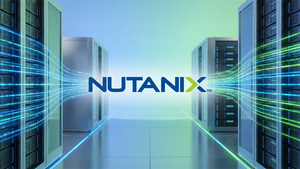
Micron Technology (NASDAQ: MU) is experiencing an unprecedented surge in its stock value, driven by an insatiable global demand for advanced memory chips, particularly those crucial for artificial intelligence (AI) applications. This market exuberance is further amplified by the company's strategic commitment of up to $3.6 billion towards bolstering its manufacturing capabilities in Japan. The investment, significantly backed by the Japanese government, underscores a pivotal moment for both Micron and the broader semiconductor industry, signaling a concerted effort to meet the escalating technological requirements of the AI era and fortify global supply chains.
The confluence of Micron's robust financial performance, fueled by surging AI-driven demand for High-Bandwidth Memory (HBM), and its substantial investment in cutting-edge production in Japan, has ignited investor confidence. This dual momentum highlights the memory chip as a key technological commodity, whose strategic importance is rapidly escalating amidst a global race for AI supremacy and resilient supply chains.
Micron's Strategic Play in the Global Semiconductor Arena
Micron Technology's recent stock rally in 2025 has been nothing short of spectacular, with shares climbing over 120% year-to-date as of October 6, 2025. This remarkable ascent is intrinsically linked to the explosive demand for memory chips, especially from the burgeoning artificial intelligence sector. High-Bandwidth Memory (HBM) and other advanced DRAM products, essential components for AI accelerators and data centers, have been primary catalysts, with Micron reporting an impressive $2 billion in HBM chip sales in fiscal Q4 2025. The company's strong fiscal performance, including record revenue of $11.3 billion in fiscal Q4 2025—a 46% year-over-year growth—and consistently expanding adjusted gross margins, has further solidified investor confidence. Analyst upgrades, such as Morgan Stanley's "Overweight" rating and a raised price target of $220 on October 6, 2025, citing expectations of "multiple quarters of double-digit price increases," have added fuel to the rally, pushing Micron's market capitalization to approximately $211 billion.
Parallel to its market triumph, Micron is making a monumental investment of up to 500 billion yen (approximately $3.6 billion to $3.7 billion USD) in Japan over the next few years. This strategic capital injection is primarily earmarked for its Hiroshima plant, focusing on intensive research and development (R&D) and capital expenditures. A cornerstone of this investment is the introduction of Extreme Ultraviolet (EUV) technology to Japan for production, making Micron the first semiconductor company to bring this sophisticated manufacturing process to the nation. EUV lithography is critical for producing the most advanced memory chips, and its implementation will drive the advancement of next-generation 1-gamma (1γ) DRAM chips, with mass production targeted for late 2027 or 2028.
The Japanese government's substantial support, providing subsidies of up to ¥536 billion (roughly $3.63 billion USD), underscores the national strategic importance of this endeavor. This subsidy covers approximately one-third of Micron's total planned investment of ¥1.5 trillion (around $9.09 billion) at the Hiroshima site, highlighting a collaborative effort to bolster Japan's position in the global semiconductor landscape. The investment's purpose is multifaceted: to enable the next wave of end-to-end technology innovation for generative AI applications, enhance memory performance through increased density and power efficiency, and strengthen global supply chains by diversifying advanced manufacturing capabilities. This move not only positions Micron at the forefront of 1-gamma DRAM production but also revitalizes Japan's domestic semiconductor industry, fostering innovation and creating thousands of jobs.
Shifting Fortunes: Winners and Losers in the Memory Chip Arena
Micron Technology's strategic investment in Japan, coupled with its current stock rally, is poised to create a significant ripple effect across the global semiconductor industry, delineating clear winners and intensifying competition for others. At the forefront of the beneficiaries is, unequivocally, Micron Technology (NASDAQ: MU) itself. By aggressively pushing into 1-gamma DRAM production with EUV technology at its Hiroshima facility, Micron is solidifying its leadership in advanced memory innovation, particularly for the high-growth AI segment. This move is expected to not only enhance its market share but also improve profitability through advanced manufacturing efficiencies and strategically diversify its supply chain, offering crucial resilience against geopolitical risks. The company's ambitious target of securing a significant share of the HBM market by the end of 2025 further underscores its aggressive growth strategy, directly reflected in its robust stock performance.
The investment also represents a substantial boon for the Japanese semiconductor ecosystem. With the Japanese government's considerable subsidies, the initiative is a cornerstone in the nation's strategy to revitalize its domestic chip industry. Japanese suppliers of semiconductor manufacturing equipment are expected to see a surge in demand. Companies like Tokyo Electron (TYO: 8035), a global leader in chipmaking gear, are already witnessing positive market reactions. Other potential beneficiaries include SCREEN Semiconductor Solutions Co., Ltd. and Advantest (TYO: 6857), particularly for testing equipment. Furthermore, Micron's stated intention to source approximately 80% of its production materials from Japanese suppliers means major global silicon wafer providers like Shin-Etsu Chemical (TYO: 4063) and SUMCO (TYO: 3436) are set to benefit from increased orders. The local economy in Hiroshima will also thrive, with thousands of direct and indirect jobs created, fostering R&D and technological innovation.
Conversely, Micron's aggressive expansion and technological leap will intensify the competitive pressure on its primary rivals, Samsung Electronics (KRX: 005930) and SK Hynix (KRX: 000660). While these South Korean giants currently hold dominant positions in the HBM market, Micron's accelerated production of 1-gamma DRAM and its foray into EUV technology in Japan directly challenge their market share and technological lead. This heightened competition could compel Samsung and SK Hynix to accelerate their own R&D and manufacturing investments to maintain their competitive edge, potentially leading to increased capital expenditure and tighter margins across the industry. Although partnerships with major AI players like OpenAI exist, Micron's advancements could disrupt existing supply agreements or secure new ones with key AI data center providers. Companies reliant on older memory technologies, or those slower to adopt cutting-edge manufacturing processes, may also face significant challenges, risking a decline in market share and profitability as Micron's more advanced and efficient offerings gain traction.
Broader Implications: A New Era for Global Semiconductor Dynamics
Micron's strategic investment in Japan carries profound implications for the global semiconductor landscape, extending far beyond the immediate financial gains. This move is a critical piece in the broader mosaic of global semiconductor competition, positioning Japan as a vital hub for advanced chip manufacturing and Micron at the vanguard of 1-gamma DRAM production. By introducing Extreme Ultraviolet (EUV) technology for production in Japan—a first for any semiconductor company in the nation—Micron is leveraging a highly sophisticated patterning technology essential for next-generation DRAM. The substantial subsidies from the Japanese government, amounting to hundreds of billions of yen, underscore a national strategy to revitalize its semiconductor industry, reduce reliance on imports, and reclaim its stature as a frontline player, echoing similar efforts seen with TSMC's (NYSE: TSM) investments in Kumamoto. This public-private partnership exemplifies the increasing role of state intervention in securing national technological and economic interests amidst intense global rivalry.
The investment is also a direct and strategic response to the pressing need for supply chain resilience. The vulnerabilities exposed by recent global disruptions and escalating geopolitical tensions have highlighted the imperative for diversified and geographically distributed semiconductor manufacturing. By expanding its manufacturing footprint in Japan, Micron contributes to a more robust global supply chain, aiming to mitigate reliance on single points of failure, particularly in East Asia. This aligns with a broader "friend-shoring" strategy adopted by various governments, ensuring critical memory production is situated within allied nations, thereby enhancing stability and security in the global technology ecosystem.
A primary catalyst for Micron's strategic pivot and its stock rally is the explosive and unrelenting demand for AI-driven memory solutions. The Hiroshima plant's focus on advancing next-generation 1-gamma process technology DRAM chips is directly aimed at supporting the burgeoning generative AI market. Micron's High-Bandwidth Memory (HBM) business, crucial for AI accelerators, is reportedly generating nearly $2 billion per quarter and is fully sold out through 2026, with HBM4 pre-selling already underway. This strategic dominance in AI-driven memory and storage markets has been a key factor in the company's strong financial performance and is set to power AI servers and next-generation data centers, further solidifying its collaborations with industry giants like Nvidia (NASDAQ: NVDA) and other hyperscalers.
The ripple effects of Micron's actions are significant. On competitors like Samsung Electronics (KRX: 005930) and SK Hynix (KRX: 000660), this aggressive move intensifies the "arms race" in memory chip innovation and manufacturing, compelling them to accelerate their own investments in next-generation technologies and potentially explore similar strategic partnerships and global expansions. While Micron may trail in some HBM volume shipments, its competitive technology and strong demand are expected to help it maintain a significant market share. For partners in the AI and data center segments, a more diversified and technologically advanced supply of memory chips from Micron could translate into greater stability, improved performance, and potentially more competitive pricing. The substantial subsidies from the Japanese government also highlight a global "subsidy race," as nations like the U.S. (with its CHIPS Act), the EU (with the European Chips Act), and India (with its Semiconductor Mission) increasingly intervene to foster critical technology industries, marking a departure from purely free-market approaches driven by national security and economic competitiveness concerns. This echoes historical precedents of state support for strategic industries, but with an intensified focus on advanced chips due to their pervasive role in modern technology and defense.
The Road Ahead: Navigating a Dynamic Memory Market
The trajectory for Micron Technology (NASDAQ: MU) and the broader memory chip market, particularly High-Bandwidth Memory (HBM), appears set for a period of dynamic evolution. In the short term (next 12-18 months), Micron is poised to continue capitalizing on the AI-driven "supercycle." Its HBM capacity for 2025 and much of 2026 is already sold out, indicating sustained strong demand and premium pricing. The overall memory market is in a robust recovery phase, with DRAM and NAND flash revenues projected to surge, driven by tight supply and increasing demand from AI data centers. Micron's substantial investments, including the Japan facility and increased capital expenditures for fiscal 2026, are strategically aimed at rapidly scaling HBM3E and future HBM4 production, securing its leadership in advanced memory technologies like 1-gamma DRAM and EUV. Furthermore, its pivot in the NAND business, focusing almost entirely on the high-performance data center SSD market, positions it to capture growth in AI inference workloads.
Looking into the long term (beyond 18 months), the AI memory chip market is forecasted for transformative growth, with AI-specific memory projected to grow at a staggering CAGR of 63.5% from 2025 to 2033. Micron's sustained success will hinge on its ability to relentlessly innovate in HBM4 and subsequent generations, delivering superior performance, power efficiency, and integration capabilities to maintain its premium pricing and market share. Geopolitical considerations will continue to drive investments in diversified and geographically distributed supply chains, with initiatives in regions like Japan and India bolstering resilience. The emergence of new technologies such as Compute Express Link (CXL) for memory disaggregation and edge AI applications will also shape future demand and technological requirements, necessitating continuous adaptation and strategic pivots.
However, this promising outlook is not without its challenges. The HBM market is becoming intensely competitive, with rivals like SK Hynix (KRX: 000660) and Samsung Electronics (KRX: 005930) aggressively expanding their HBM production, potentially leading to an oversupply scenario by 2027. Industry observers even predict a potential oversupply in the HBM market by 2027 due to this aggressive expansion, which could impact Micron's pricing power and profitability. The inherent cyclicality of the memory industry, despite the current AI-driven "supercycle," always presents the possibility of future market corrections. Micron must therefore focus on relentless technological differentiation, efficient cost management, deepening customer partnerships to secure HBM supplies, and carefully navigating the volatile NAND market to sustain its growth trajectory amidst these evolving market dynamics.
Final Thoughts: A New Horizon for Memory and Technology
Micron Technology's (NASDAQ: MU) recent stock rally and substantial $3.6 billion investment in Japan mark a pivotal moment, not just for the company, but for the entire global semiconductor industry. The key takeaway is Micron's successful strategic repositioning from a traditional memory provider for PCs and smartphones to a critical enabler of the AI revolution. This transformation, fueled by insatiable demand for High-Bandwidth Memory (HBM) and advanced DRAM, has driven unprecedented financial performance, with record revenues and soaring net income in fiscal 2025. The Japan investment, significantly backed by government subsidies, solidifies Micron's technological leadership by introducing EUV lithography for 1-gamma DRAM production and strategically diversifying its manufacturing footprint, enhancing global supply chain resilience.
Moving forward, the memory market is assessed to be in a strong "supercycle," primarily driven by AI, with healthy customer inventory levels expected through the end of calendar 2025. Micron's HBM capacity is sold out through much of 2026, signaling sustained demand and premium pricing. However, investors must remain cognizant of the intensifying competitive landscape, with rivals like SK Hynix (KRX: 000660) and Samsung Electronics (KRX: 005930) aggressively expanding their HBM production, potentially leading to an oversupply scenario by 2027. Despite the current bullish sentiment, the memory industry retains its inherent cyclicality, and future market corrections are always a possibility. Micron's strategic pivots in NAND, focusing on high-performance data center SSDs, further underscore its commitment to capturing high-growth segments.
The lasting impact of Micron's actions is profound. As the only U.S.-based memory manufacturer, its technological advancements and global manufacturing expansion, particularly with cutting-edge EUV integration in Japan, secure a crucial edge in the global semiconductor ecosystem. This, coupled with governmental support, reinforces a global trend towards strengthening domestic semiconductor supply chains and reducing reliance on concentrated manufacturing hubs. For investors, the coming months will require close monitoring of Micron's financial performance, particularly in the data center and HBM segments, and the broader memory pricing trends. Key indicators to watch include the progress of the Hiroshima fab's 1-gamma DRAM and HBM production, competitive developments from rivals, and any shifts in macroeconomic or geopolitical factors that could influence the semiconductor industry's trajectory. While the near-term outlook is highly positive, long-term success will hinge on Micron's ability to maintain technological leadership, navigate intense competition, and adapt to potential market shifts.
This content is intended for informational purposes only and is not financial advice







